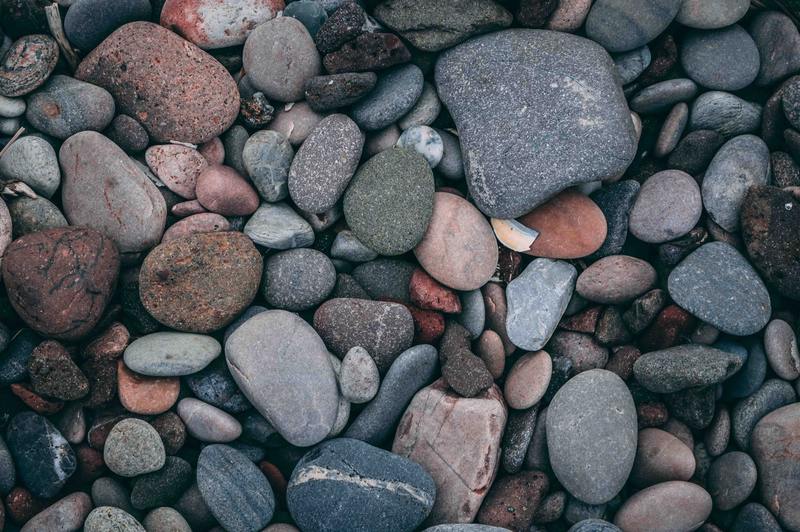When it comes to mold, it’s as organic as rocks. This article will help you learn how to remove mold from rocks as it can multiply, especially in open spaces.
Mold can grow on any surface that is damp, dirty, and porous. Mold thrives on any surface covered with dirt, environmental debris, and dampness.

Although some rocks are more porous than others, mold and mildew can eventually grow if the surface isn’t properly cleaned and maintained.
You don’t want to see your stone surfaces stained by bacterial metabolism. Here’s an article to guide you on how to remove mold from rocks.
Why Do You Need To Remove Mold?
For example, mold exposure may cause breathing difficulties, asthma attacks, sinusitis, coughing, itchy eyes, and more.
When it comes to molds, there is a significant distinction between “ordinary” molds (like the ones we see on foodstuffs and occasionally on buildings) and “dangerous black mold.” Here’s a guide to know what is the most dangerous mold.
Harmful black mold remediation professionals can remove this severe health risk from your rocks if you suspect it grows there. Learn more on how to identify black mold.
How Do You Kill Mold From Rocks?
Things you need:
- Gloves for mold and algae Removal
- Wearing a dust mask and goggles
- Pressure washing with a sharp push sweeper
- Bleach or vinegar
Step #1. First, spray the area with a solution of white vinegar and water to eliminate any mold or algae present.
Use a gallon of water and a cup of household bleach, or 5 percent white vinegar. Be careful not to damage the rocks by using a hard-bristled brush or scraper to scrape the extra material between the stones.
Step #2. You can remove mold and algae off hardscapes with a simple pressure wash, but you have a few other options if that doesn’t work. There are a few things to keep in mind while using bleach, including the fact that it has a bigger environmental impact and can even alter the color of some rocks and stones.
Step #3. After using a bleach solution to eliminate mold or algae, you will need to wash the area. Mold and algae stains on hardscapes may necessitate a second and third application of this method.
If you can’t go through all of the rocks in a day, break them up into sections and return the next day to finish the rest. When the task is complete, proceed in the same method.
Step #4. Pouring soil back into the landscaped area and then adding rocks on top is possible if you place all the stones aside to spread out once you complete the task.
Is It Effective To Use Commercial Products On Mold?
If your mold or algae situation is minor, you can use a basic patio or terrace wash-type solution for cleanup operations. It is possible to remove mold and algae stains with a mold stain remover.
Most of these treatments require that you spray the area, let the product work for a few moments, brush with a lawn brush or push sweeper, and then wash the area with water.
How Do You Prevent Mold From Rocks?
Keeping your rocks clean and dry is the best approach to prevent the growth of moss or algae. The best method to keep your pavers from getting too much sunshine is to remove trees and other vegetation obstructing the view.
To avoid water from pooling, you can add a modest slope to your surface, as well as gravel drainage routes.
Paver joints and surfaces can be sealed and protected from intrusive mold by applying a polyurethane coating. With the treatment of a polyurethane coating, it will bring out your pavers’ hues to their fullest potential.
How Do You Maintain A Clean Environment To Prevent Mold In Rocks?
Clean regularly
The spores will have little trouble finding the resources they need to grow. The dirt that accumulates on top of access to natural pavers, tiles, or slabs quickly decomposes, increasing the risk of mold.
Thorough maintenance with clean water, such as power-scrubbing a patio, is the right approach to prevent mold from forming.
Maintain the rocks clean and dry
Rock surfaces, especially those used indoors, should be maintained dry at all times to preserve the natural stone’s seal. It doesn’t matter if you use the rocks outdoors or indoors.
Good care and preservation of natural stone are relatively simple if we all know how to do it.
Clean with a mixture of water and bleach
You may remove mold with household bleach. Apply the mixture with a synthetic brush or pad made of soft nylon.
To finish cleaning, use clean water and a rock cleaner and sealant after allowing the bleach and water solution to rest for about fifteen minutes after the initial scrape.
Conclusion
Aside from knowing how to remove mold from rocks, you also need to make sure the space can dry out properly and has sufficient airflow to avoid future mold or algae problems. You can prevent water from gathering by pruning hanging trees and shrubs, moving patio furniture, or creating drainage routes.
